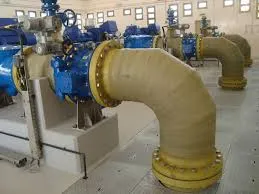
-
 Afrikaans
Afrikaans -
 Albanian
Albanian -
 Amharic
Amharic -
 Arabic
Arabic -
 Armenian
Armenian -
 Azerbaijani
Azerbaijani -
 Basque
Basque -
 Belarusian
Belarusian -
 Bengali
Bengali -
 Bosnian
Bosnian -
 Bulgarian
Bulgarian -
 Catalan
Catalan -
 Cebuano
Cebuano -
 China
China -
 China (Taiwan)
China (Taiwan) -
 Corsican
Corsican -
 Croatian
Croatian -
 Czech
Czech -
 Danish
Danish -
 Dutch
Dutch -
 English
English -
 Esperanto
Esperanto -
 Estonian
Estonian -
 Finnish
Finnish -
 French
French -
 Frisian
Frisian -
 Galician
Galician -
 Georgian
Georgian -
 German
German -
 Greek
Greek -
 Gujarati
Gujarati -
 Haitian Creole
Haitian Creole -
 hausa
hausa -
 hawaiian
hawaiian -
 Hebrew
Hebrew -
 Hindi
Hindi -
 Miao
Miao -
 Hungarian
Hungarian -
 Icelandic
Icelandic -
 igbo
igbo -
 Indonesian
Indonesian -
 irish
irish -
 Italian
Italian -
 Japanese
Japanese -
 Javanese
Javanese -
 Kannada
Kannada -
 kazakh
kazakh -
 Khmer
Khmer -
 Rwandese
Rwandese -
 Korean
Korean -
 Kurdish
Kurdish -
 Kyrgyz
Kyrgyz -
 Lao
Lao -
 Latin
Latin -
 Latvian
Latvian -
 Lithuanian
Lithuanian -
 Luxembourgish
Luxembourgish -
 Macedonian
Macedonian -
 Malgashi
Malgashi -
 Malay
Malay -
 Malayalam
Malayalam -
 Maltese
Maltese -
 Maori
Maori -
 Marathi
Marathi -
 Mongolian
Mongolian -
 Myanmar
Myanmar -
 Nepali
Nepali -
 Norwegian
Norwegian -
 Norwegian
Norwegian -
 Occitan
Occitan -
 Pashto
Pashto -
 Persian
Persian -
 Polish
Polish -
 Portuguese
Portuguese -
 Punjabi
Punjabi -
 Romanian
Romanian -
 Russian
Russian -
 Samoan
Samoan -
 Scottish Gaelic
Scottish Gaelic -
 Serbian
Serbian -
 Sesotho
Sesotho -
 Shona
Shona -
 Sindhi
Sindhi -
 Sinhala
Sinhala -
 Slovak
Slovak -
 Slovenian
Slovenian -
 Somali
Somali -
 Spanish
Spanish -
 Sundanese
Sundanese -
 Swahili
Swahili -
 Swedish
Swedish -
 Tagalog
Tagalog -
 Tajik
Tajik -
 Tamil
Tamil -
 Tatar
Tatar -
 Telugu
Telugu -
 Thai
Thai -
 Turkish
Turkish -
 Turkmen
Turkmen -
 Ukrainian
Ukrainian -
 Urdu
Urdu -
 Uighur
Uighur -
 Uzbek
Uzbek -
 Vietnamese
Vietnamese -
 Welsh
Welsh -
 Bantu
Bantu -
 Yiddish
Yiddish -
 Yoruba
Yoruba -
 Zulu
Zulu
frp pipes and fittings
Understanding FRP Pipes and Fittings A Comprehensive Overview
Fiber Reinforced Plastic (FRP) pipes and fittings are gaining prominence in various industries due to their unique properties and advantages over traditional materials such as steel and concrete. These advanced materials comprise a polymer matrix reinforced with fibers—typically glass, carbon, or aramid—resulting in a lightweight yet durable solution for fluid transportation and structural applications.
Key Properties
One of the standout features of FRP pipes is their corrosion resistance. Unlike metal pipes that can suffer from oxidation and rust, FRP materials are designed to withstand harsh chemical environments, making them ideal for industries that deal with aggressive fluids, such as chemical manufacturing, wastewater treatment, and oil and gas. In addition to their chemical resilience, FRP pipes have excellent thermal insulation properties, which can help maintain the temperature of the fluids transported within them, reducing energy costs and improving efficiency.
Another significant advantage is their lightweight nature. FRP pipes are considerably lighter than their metallic counterparts, making them easier to handle, transport, and install. This not only reduces logistical costs but also minimizes the need for heavy lifting equipment during installation. Consequently, projects can be completed more quickly and with less labor.
Applications
The applications of FRP pipes and fittings are widespread. In the oil and gas industry, they are used for transporting corrosive substances such as crude oil, natural gas, and by-products. Their ability to withstand high pressure and temperature variations makes them suitable for offshore drilling and pipeline systems, where environmental conditions can be extreme.
frp pipes and fittings

In water and wastewater applications, FRP pipes are often utilized for sewage systems, stormwater management, and potable water transport. Their resistance to biofouling and algae growth ensures that the integrity of the water remains uncompromised. Additionally, FRP fittings, including elbows, tees, and flanges, are essential for creating complex piping networks that meet specific operational needs.
Environmental Considerations
In recent years, the environmental impact of materials has garnered increasing attention, and FRP pipes are no exception. These materials are often praised for their longevity and reduced need for replacement, as they tend to last longer than metal pipes. This durability not only lowers maintenance costs but also lessens the environmental footprint associated with frequent replacements.
Moreover, advancements in manufacturing processes for FRP materials are making them more eco-friendly. Many manufacturers are now utilizing recyclable materials and implementing sustainable practices, thereby reducing the overall impact on the environment.
Conclusion
In conclusion, FRP pipes and fittings represent a forward-thinking solution for various industrial applications. Their remarkable properties, including corrosion resistance, lightweight nature, and thermal insulation, make them a preferred choice across multiple sectors. As industries continue to prioritize efficiency and sustainability, the demand for FRP materials is expected to rise. With ongoing innovations and a focus on environmental responsibility, FRP pipes and fittings are poised to play an increasingly vital role in the future of infrastructure development. As professionals in the field explore new applications and refine existing technologies, the potential for FRP materials is virtually limitless.
Latest news
-
Exploring the Benefits of Top Hammer Drifter Rods for Enhanced Drilling PerformanceNewsJun.10,2025
-
High-Precision Fiberglass Winding Machine for GRP/FRP Pipe Production – Reliable & Efficient SolutionsNewsJun.10,2025
-
FRP Pipes & Fittings for Shipbuilding - Corrosion-Resistant & LightweightNewsJun.09,2025
-
Premium FRP Flooring Solutions Durable & Slip-ResistantNewsJun.09,2025
-
Premium Fiberglass Rectangular Tanks Durable & Lightweight SolutionNewsJun.09,2025
-
Tapered Drill String Design Guide Durable Performance & UsesNewsJun.09,2025









